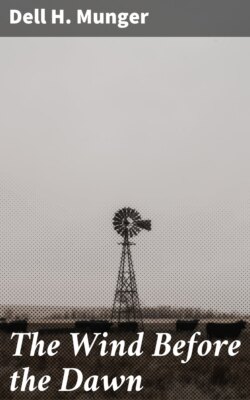Читать книгу The Wind Before the Dawn - Dell H. Munger - Страница 6
ОглавлениеThe young girl received a new impetus toward improvement. The family began to regard her as a member set apart, as one from whom special things were to be expected. From being just comfortably at the head of her classes, she became more ambitious, reached over into new territory, and induced the teacher to create new classes for her benefit. The subjects required for the examination of teachers were added to those usually carried. There was a real purpose in her efforts now, and the smoky kerosene lamp burned stubbornly till late hours.
The new teacher not only listened to recitations but appealed to the artistic in the newly developing woman. She rolled her hair from neck to brow in a “French twist” and set on the top of it an “Alsatian bow,” which stood like gigantic butterfly wings across her proud head. The long basque of her school dress was made after the newest pattern and had smoke-pearl buttons, in overlapping groups of three, set on each side of its vest front. The skirt of this wonderful dress was “shirred” and hung in graceful festoons between the rows of gatherings, and was of an entirely new style. Last, but not least, the teacher’s feet were shod in “side laces,” the first pair of a new kind of shoes, destined to become popular, which laced on the inside of the ankle instead of on the top as we have them now. Of all her stylish attractions this was the most absorbing. “Fool shoes,” Sadie Crane called them, and her little black eyes twinkled with a consuming spite when she mentioned them, but the ambitious Farnshaw child, reaching out for improvement and change, coveted them, and preened her own feathers, and mimicked, and dreamed. She accepted the shoes just as she accepted the teacher’s other attributes: they were better than her own.
To be better than her own—that was the measure of Lizzie Farnshaw’s demand. If the shoes, the clothing, the manners, the ideas, were better than her own they were worthy of honest consideration. The teacher’s tongue was sharp and her criticisms ruthless, but they had elements of truth in them, and even when they were directed against the child herself they were a splendid spur. The young girl copied her manners, her gait, and her vocabulary. She watched her own conversation to see that she did not say “have went” and “those kind”; she became observant of the state of her finger-nails; if she had to lace her shoes with twine string, she blackened the string with soot from the under side of the stove lids, and polished her shoes from the same source.
Mrs. Farnshaw, broken with the cold, the privations of the long winter, and the growing disappointments of her domestic life, saw nothing but overdressing and foolishness in her daughter’s new attention to the details of personal appearance. Burdened with her inability to furnish the clothes the family needed, she complained monotonously over every evidence of the young girl’s desire to beautify herself. When the mother’s complaints became unendurable, the father usually growled out a stern, “Let the child alone,” but for the most part the growing girl lived a life apart from her family, thought along different lines, and built about the future a wall they could never climb, and over whose rim they would rarely, if ever, catch a glimpse of the world within. No life, however hard, could ever tame that spirit, or grind its owner into an alien groove after that year of imaginative castle building.
